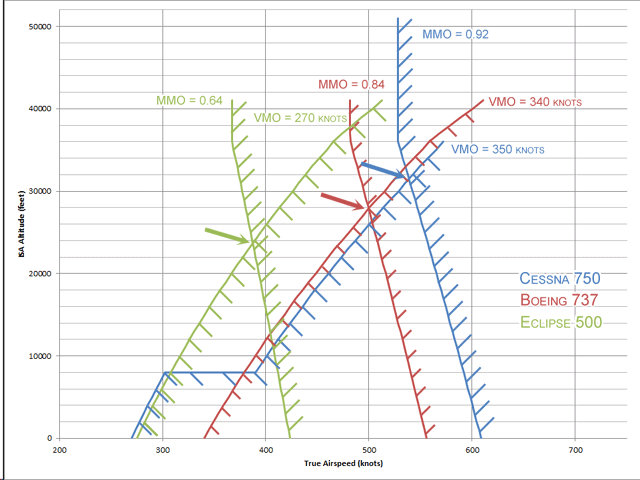Mattio,
While ljg is correct that the airspeed that corresponds to the critical Mach number of a given aircraft changes based on altitude (or, more correctly, based on TEMPERATURE and pressure, which in turn vary with altitude), the MACH number that corresponds to the critical Mach number of a given aircraft is constant. For example, if your airplane's Mcrit is .83, then it is .83 at any altitude, at any temperature, at any density, or at any pressure.
For my justification of this, look
here. Look at formula 6.3 on page 4. This formula shows an equality of 3 quantities in the form A=B=C, right? Well let's ignore the center of the formula, and just set A=C. Notice what remains?
Well Cp,0 is a constant. It is the lowest pressure coefficient on a wing at low air velocities. Basically, you get this from testing the wing at low speeds, but it only changes when you change the shape of the wing. It does not change based on temperature, pressure, or density, and therefore it is constant as altitude changes.
Also gamma (the funky looking y-shaped letter in the equation) is also a constant. That is the ratio of specific heats, and for air it is about 1.4. This actually does change with temperature, but only VERY VERY slightly. For example, at -40 (Fahrenheit) it is about 1.401, and at 180 F, it is about 1.399. In other words, a small enough change (1/7th of 1% or about a 0.143%) that you can treat it as essentially constant.
Well, the only other quantity in the formula is Mcrit. So if Mcrit is in a formula with a bunch of quantities and none of those other quantities change with altitude, Mcrit cannot possibly change with altitude either. This would be easy to prove by solving the formula for Mcrit, but unfortunately that formula probably can't be easily manipulated to get Mcrit by itself on one side.



